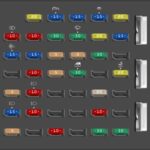The OBD2 pass-through technology has revolutionized automotive diagnostics and tuning, especially for vehicles equipped with Controller Area Network (CAN) based systems. Initially developed within enthusiast communities to enhance capabilities of tools like the HPTuners MPVI/MPVI2 scanners, the OBD2 pass-through allowed direct data streaming from wideband oxygen sensors via the vehicle’s OBD2 port. This innovation brought significant convenience and efficiency to engine tuning and performance monitoring. However, a segment of vehicles, specifically those manufactured between 1996 and 2007, presented a unique challenge due to their reliance on different communication protocols, primarily J1850 (VPW and PWM).
For tuners and automotive professionals working with these pre-CAN OBD2 vehicles, integrating wideband data into diagnostic and tuning software has often been a cumbersome process. Traditional methods involved using Pro versions of scanning tools with ProLink CAN interfaces, serial data connections, or even analog wiring workarounds. These solutions often presented limitations, particularly when dealing with dual-channel wideband setups, making accurate and efficient data logging a complex task.
Recognizing this gap in capability, particularly for popular platforms like earlier GM, Ford, and Chrysler vehicles utilizing J1850 OBDII systems, a dedicated OBD2 pass-through solution is being explored. This initiative aims to provide a hardware adapter that mirrors the functionality of the AEM 30-0334 for pre-CAN vehicles. This adapter would serve as an intermediary, effectively replacing the standard pass-through cable used with CAN-based systems, but tailored to interpret and transmit J1850 protocol data.
This specialized OBD2 pass-through adapter is envisioned as a standalone hardware component, distinct from the wideband sensor itself. Its design, utilizing existing housing models, will incorporate terminals to seamlessly connect to the CAN wires from wideband controllers such as the AEM 30-0300 or 30-0310. This configuration not only simplifies the connection process but also allows for the integration of multiple wideband sensors, enabling comprehensive air-fuel ratio monitoring across different engine banks or points in the exhaust system.
Further enhancing its practicality and sensor longevity, the proposed adapter may include an optional cold-start safety feature. This function would intelligently delay the heating of the wideband sensor’s ceramic element until after the engine has started, mitigating potential thermal shock and extending the sensor’s operational life.
In essence, this J1850-enabled OBD2 adapter aims to bridge the communication gap for pre-CAN vehicles, providing a direct and efficient method for integrating wideband sensor data into OBDII diagnostic and tuning workflows. By offering a solution akin to the AEM 30-0334 but tailored for J1850 systems, this adapter promises to streamline the tuning process for a significant range of vehicles. While still in the developmental phase, the potential availability of such an adapter, estimated to be in the $70 to $80 price range depending on production volume, represents a valuable tool for automotive tuners and enthusiasts working with pre-CAN OBD2 systems, offering a cost-effective alternative to more complex and less integrated methods.
